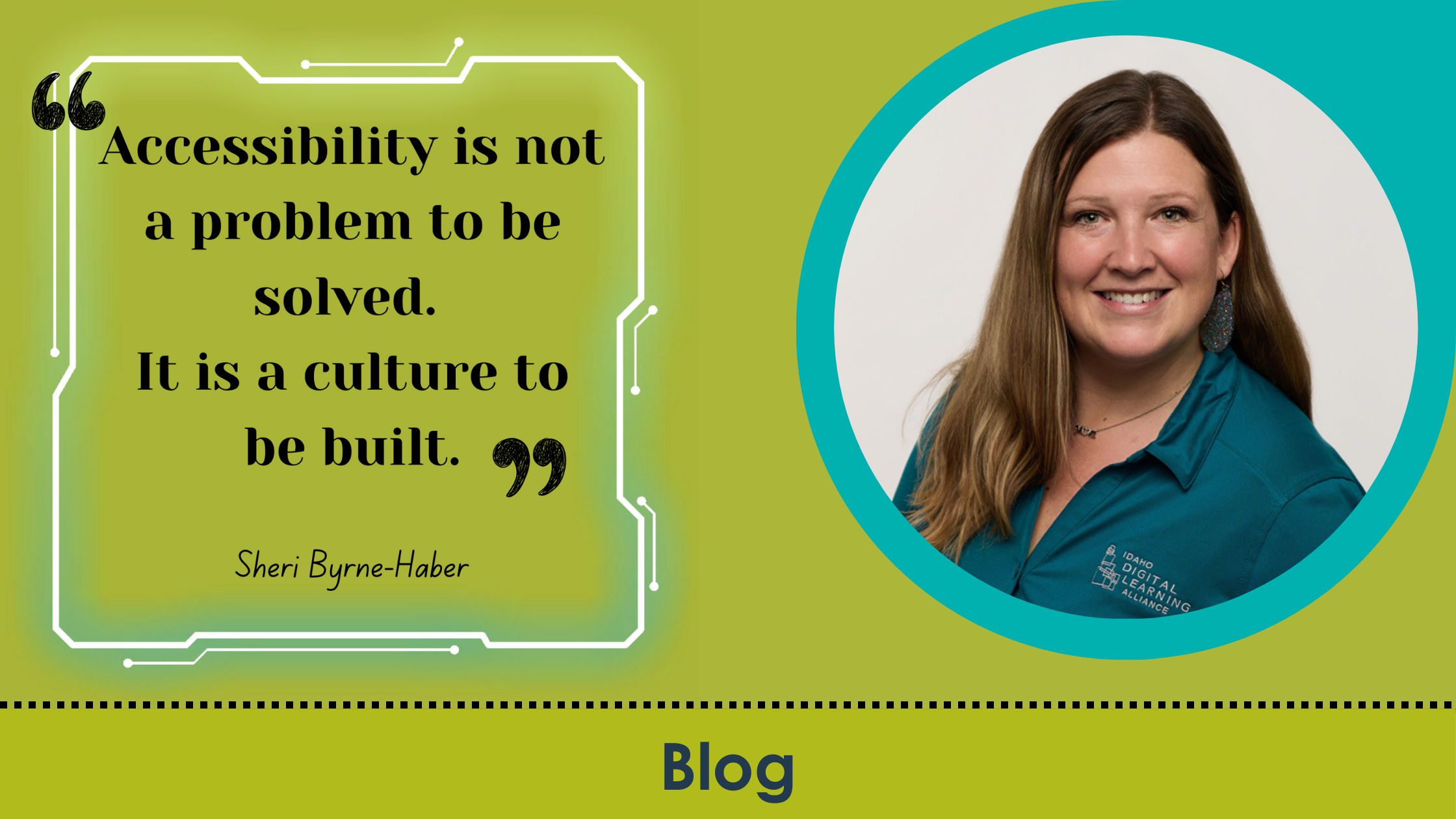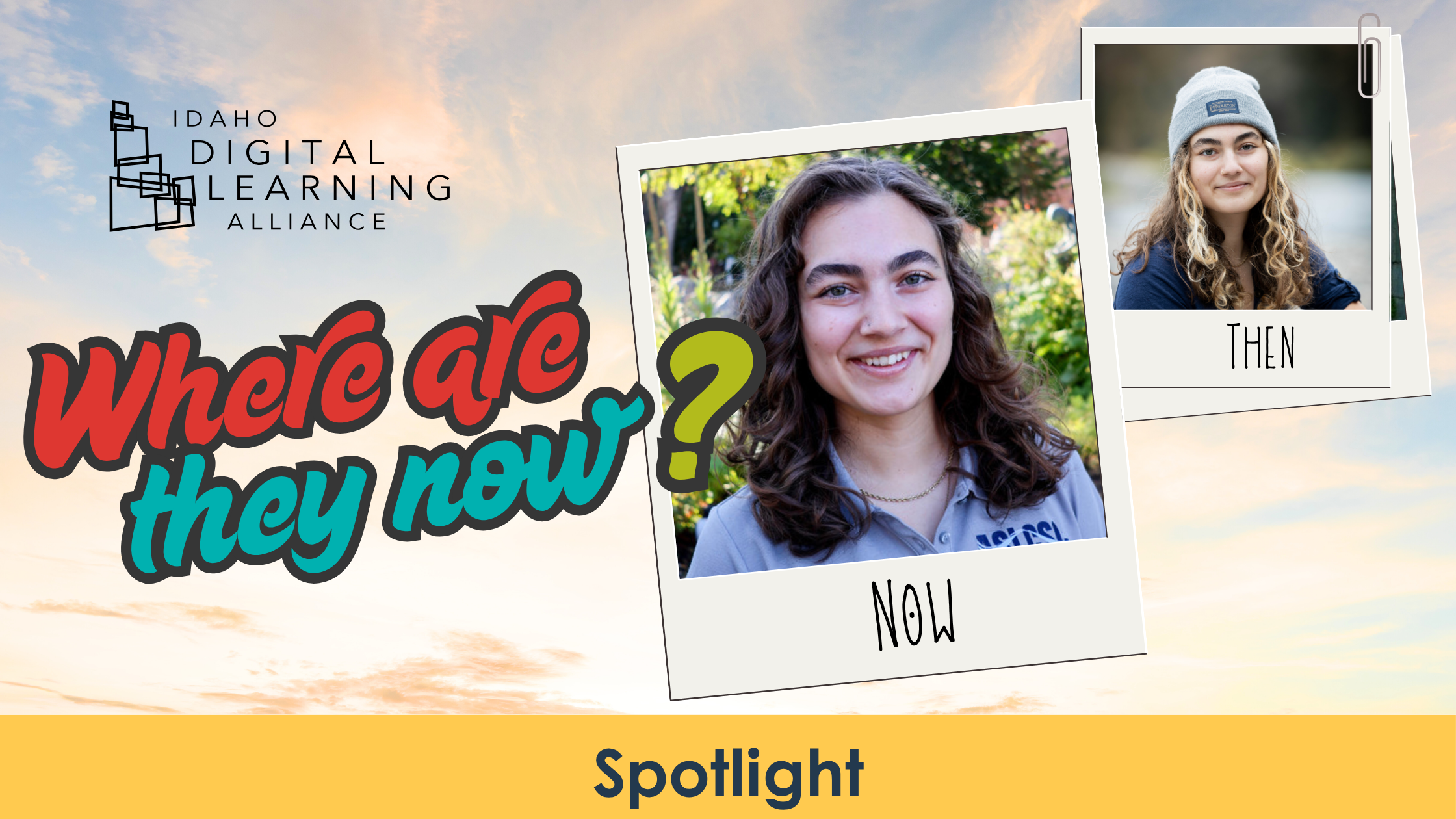By Ashlee Kolar, IDLA Education Technology Engineer
Accessibility isn’t a checkbox; it’s a mindset and something to work towards constantly. Making something accessible isn’t just about meeting a requirement; it’s about meeting learners where they are. Thanks to rapid innovations in AI, digital learning is becoming more inclusive, personalized, and effective. When we treat AI as a partner and not a replacement, we can open more doors for more students.
At IDLA, accessibility is woven into how we design our courses. Our content is built to meet Quality Matters standards, which means accessibility isn’t an afterthought – it’s an expectation. We include features like closed captions, alternative text for images, transcripts, and flexible navigation so all students can engage in our content meaningfully. AI technology is helping us support more students by automating these tasks and allowing us to deliver accessible content consistently. These capabilities also support personalized instruction by offering scaffolds to struggling learners and challenges for those ready for more.
AI tools are no longer a thing of the future; they’re already integrated for learners at IDLA. Students use features like speech-to-text for writing assignments, real-time translation to support English language learners, and AI-generated summaries to better understand complex material. These tools are designed to empower learners to access content in ways that best suit their individual needs and unique learning styles. However, AI is only effective when used intentionally. When it is applied thoughtfully and strategically, it can significantly enhance the learning experience and provide meaningful growth and engagement.
At IDLA, we prioritize thoughtful implementation of technology. Our staff is trained to model responsible AI use, ensuring that technology enhances teaching rather than replacing it. Our goal is not to eliminate human interaction; it’s about creating deeper conversations and enriching student learning experiences.
With the rapid pace of AI evolving, it is exciting to see how it is already beginning to reshape accessibility in ways that go beyond the online classroom. For example, OpenAI’s new live video interaction not only interprets handwritten notes and math equations from images, but it can also describe scenes in real time for students with visual impairments. Smart glasses like those created by Meta, empowered by Be My Eyes, offer AI-driven real-world navigation and scene description without a human on the other end. AI-driven solutions, such as accessiBe, enhance website accessibility by automatically identifying and addressing barriers using contextual understanding and machine learning.
These advancements offer us a glimpse into a future where accessibility is no longer limited to screen readers or alt text but to daily interactions both on and offline.
One of my favorite quotes comes from accessibility expert Sheri Byrne-Haber:
“Accessibility is not a problem to be solved. It is a culture to be built.”
Although AI and EdTech are exciting, they’re not magic wands. There will always be students at risk of falling behind unless we intentionally bring them with us. That means designing for equity from the start, offering guidance and support alongside access, and never forgetting that inclusion is everyone’s responsibility.
The future of learning is here, and it only works if we ensure everyone’s included.



